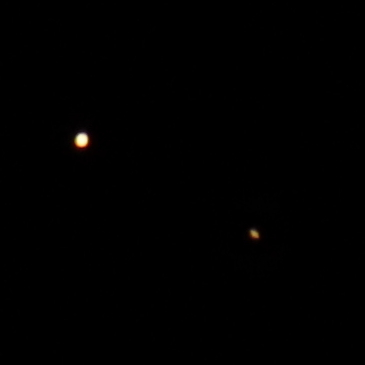 |
| Canon EOS M50: EF-S 55-250mm IS II: f/5.6, 1/30", 250mm, ISO 400 |
 |
| Canon EOS M50: EF-S 55-250mm IS II: f/8, 1/20", 250mm, ISO 800 |
Pretty low in the sky, so there's a lot of air before you hit vacuum here.
I'm pretty sure I'm going to be changing to an RF mount camera before too long. KA-CHING!
What's an R5 going for now? 3.6 Mosins?



Better than the best I got with my T6i.
ReplyDeleteMy lens is a low-end Sigma 70-300mm zoom and I shot from my driveway - combination of it being too low in the sky and too many trees from the back yard. I might have tried a telescope if I could see it from the backyard. Then the light path is not just low in the sky, but over the house which I'm sure would be giving off heat.
I took a couple dozen pics with various settings.
DeleteThe little M50 just isn't an astronomy camera and I'm not budgeted for the glass that a full-frame camera would use.
Happily, for every other picture I've tried to take, it's been an outstanding little camera. It's a pity there's no market for the niche the EF-M cameras fill and Canon appears to be letting them rot on the vine.
There's astrophotography with long, guided exposures and there's planetary photography which is less extreme. Deep sky astrophotography tends toward wide angles and some people use nothing but an off the shelf DSLR. Bigger aperture is better than long exposures on smaller lenses because the longer the shutter is open the more chance something bad can happen.
ReplyDeleteIf you really want to do planets, the results people get with taking video and using software like Astrostack to stack up the frames are worth looking at. For planets, focal Length is king. Long exposures need guiding more than the shorter ones you'll take for planets.
It's complex stuff, a blend of ridiculous technology and art.